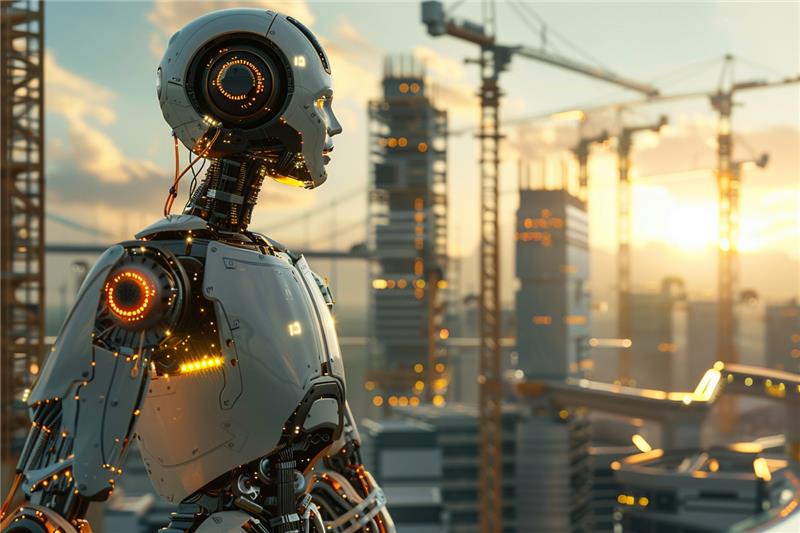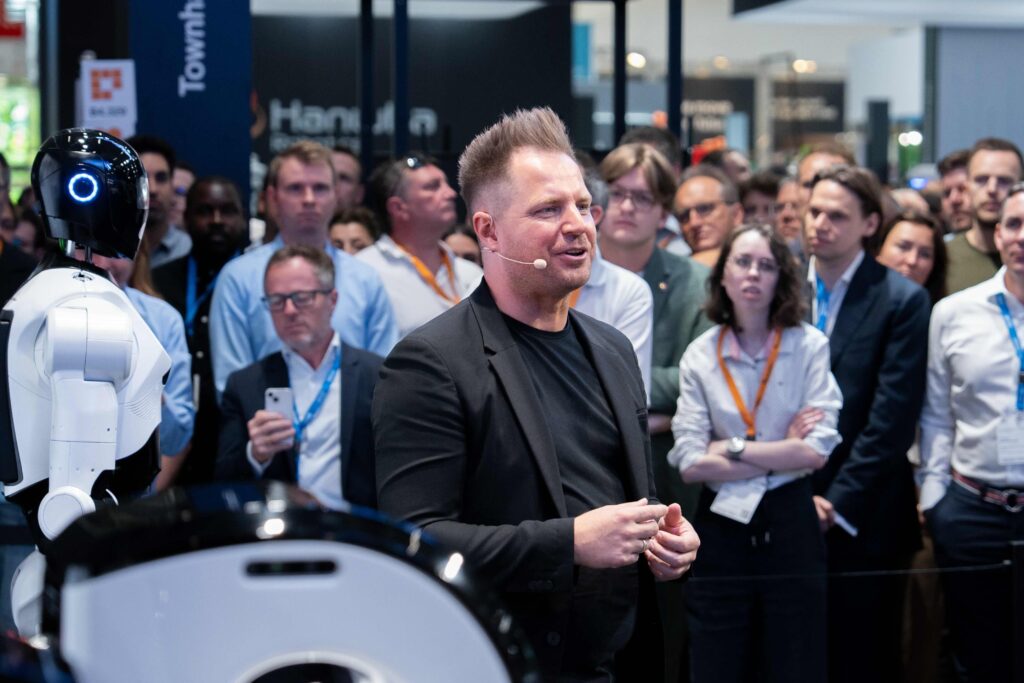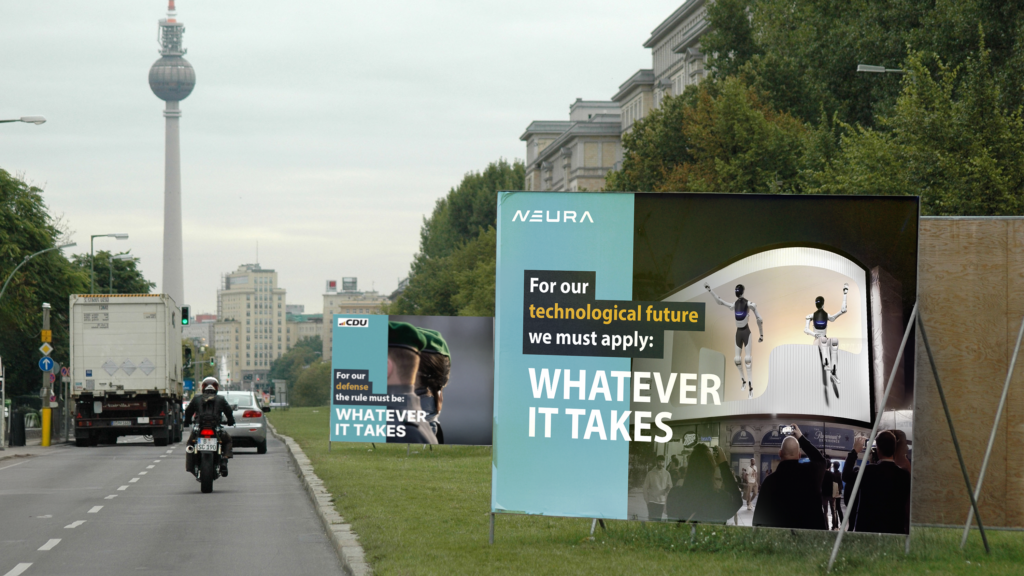The announcement was made a few months ago, and it was short, sharp, and couldn’t have been clearer: China plans to build 35 million robots in the coming years. At first, it’s just an ambitious number. But even if the Chinese only hit 50% of their target, it’s still a figure that challenges us and should push us to start thinking bigger again.
I tried to picture 35 million robots in my mind. Not exactly easy. In the movie “I, Robot,” there’s a scene where finished robots are waiting in a massive hall to be shipped out. The hall is gigantic, and the robots take up all the space. A hall the size of a FIFA-standard football field would be about 7,000 square meters. If you can fit one robot per square meter, you’d need 5,000 such halls to house 35 million robots. Spread across the entire German highway network, you’d have one of these halls every 2.6 kilometers.
Here’s another striking image: in Germany, about 46 million people are employed—working some kind of job. If we distributed 35 million robots among these workers, roughly three out of four German employees would have a robot assistant at their side.
We should keep in mind that China regularly achieves more than 85% of its goals. In just a few decades, this massive country has developed from economic insignificance into the second-largest economy in the world, right behind the U.S. When Deng Xiaoping took over after Mao’s death, he initiated a radical shift in the country with his vision: “To get rich is glorious.” Twenty years ago, Shanghai was home to a quarter of all the construction cranes in the world. Every single day, a new skyscraper was completed! The Transrapid maglev train had just been built and now takes passengers from the city to Pudong International Airport at 430 km/h. And just for the record: that technology came from Germany, where it was quietly shelved. We stuck to regular rail, and today we’re just happy if our trains even run. A great vision for Germany would be that by 2030, all trains will run on time. And I mean real “on time,” not the kind where a 15-minute delay is still considered punctual.
Ignore the Naysayers
Have we forgotten how to be visionary? The 38th governor of California, Arnold Schwarzenegger, gave his famous “Six Rules of Success” speech to graduates at the University of California, which went down in history. Rule number four was: “Ignore the Naysayers.”
The U.S. set itself the goal: “We choose to go to the moon. Not because it’s easy, but because it’s hard.” John F. Kennedy’s famous vision put people on the moon. Anyone who knows the story of the Apollo missions knows: it was a difficult road, full of setbacks, so technically challenging that we wouldn’t be able to pull it off today. Yet the eventual success became a triumph for the United States and cemented its global leadership. Today, it’s the entrepreneurs of high-tech companies from Silicon Valley, Texas, and the East Coast who continue to amaze us with their visions and their execution.
During my time in San Francisco, I learned how “The Golden State” developed into one of the largest economies in the world. California was only admitted to the Union in 1850, and back then, it could only be reached by sea, which took nine months, or by land from Missouri, which took a year. The vision of a transcontinental railroad was born—Charles Crocker was its father. But a year after construction started, only 80 kilometers of track had been laid—the task seemed too difficult, and the doubters and naysayers were triumphant! That’s when Crocker said, “Who built the Great Wall of China? If they could do that, they can build this railroad!” He brought 50 Chinese miners to California who had experience with drills and dynamite. Six months later, 3,000 Chinese workers were building the transcontinental railroad. A year later, there were 40,000 Chinese railroad workers. Six years later, the connection between the Atlantic and Pacific was complete.
Think big (again)!
Recently, I wrote on my blog about the power of vision. We, too, had visionaries in Germany who created great things. I mentioned Carl Benz and Gottfried Daimler, and also Artur Junghans, who came from the region where I grew up. He formulated the vision, “The world wakes up with Junghans clocks,” and created the largest clock and alarm factory in the world. Think big! Think bigger! Think biggest! That’s what we need now!
35 million robots from China? We accept the challenge! Neura Robotics is ignoring the naysayers! It will be tough, it will be hard, but we’re tackling it head-on! We need to deliver quickly if we want to take the lead in humanoid robotics globally. That’s why we’ve already committed to delivering up to 5 million humanoid and cognitive robots by 2030. And this is far from the end of the line—it’s only the beginning of a new era.






